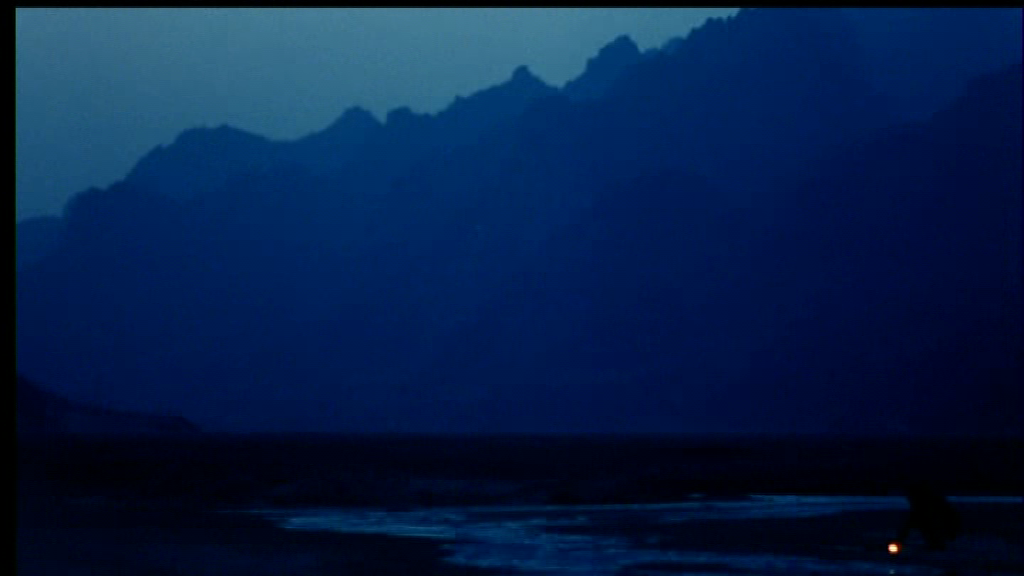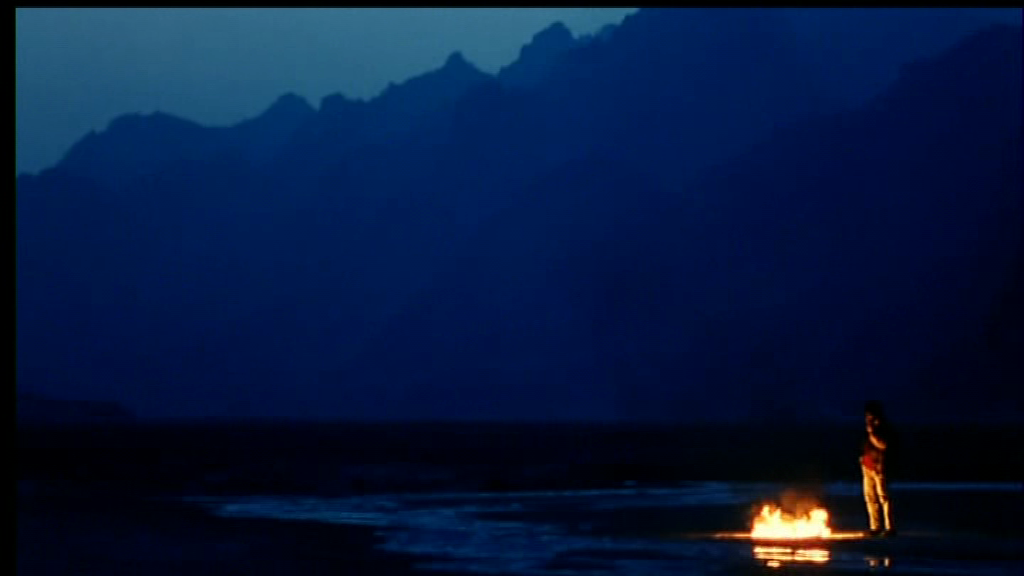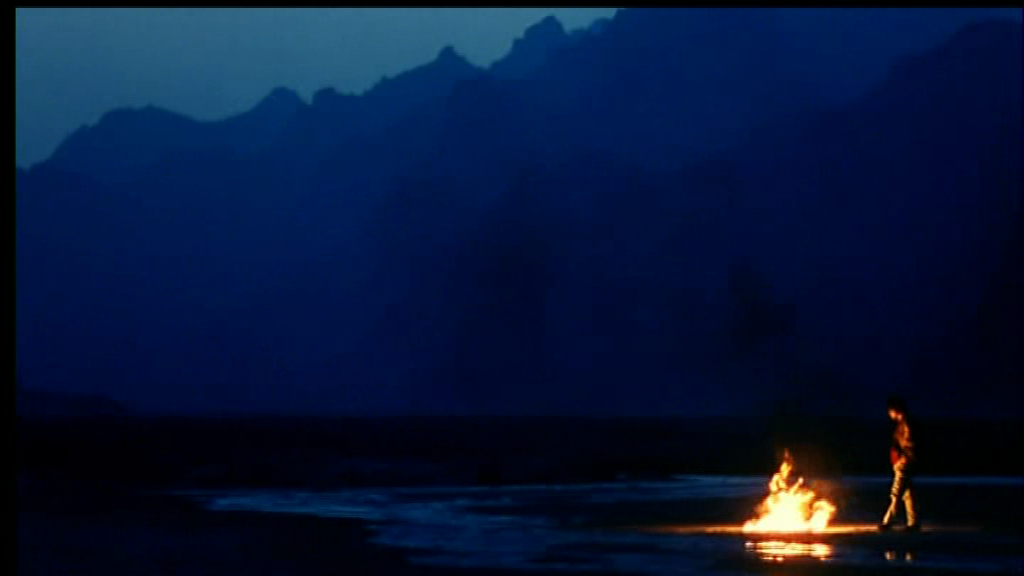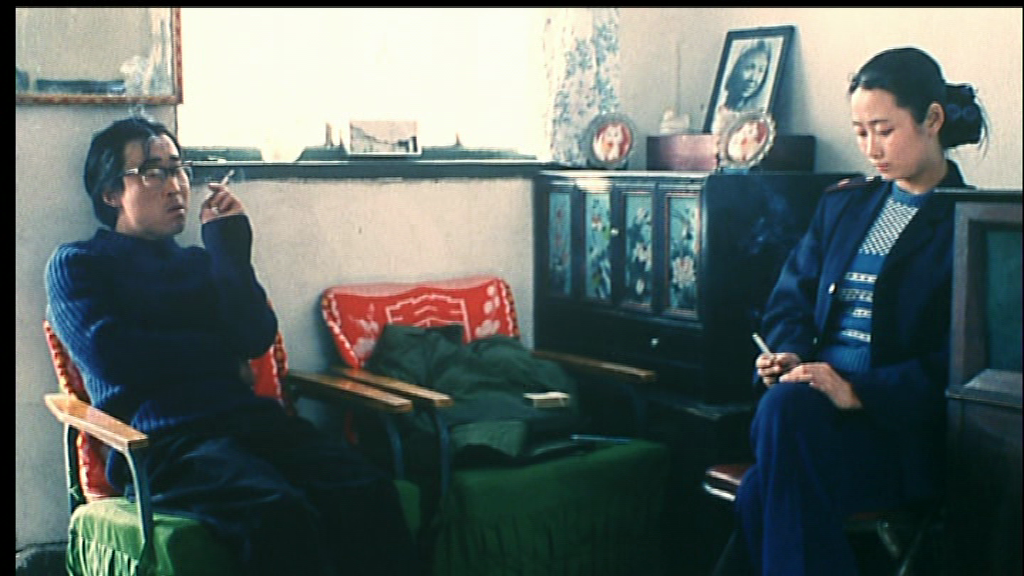Platform is indeed the decade's best film to explore cultural crisis. Filmmaker Jia Zhangke created a piece of art that will endure time. Unlike most art films from its time (1990s-2000s), it has a unique aesthetic that is all-in-all critical, subliminal, poetic and political. Jia uses depth with precision and stages his cast in an ensemble shot of long durations characterizing Platform as a postsocialist-realist film with style in homage to several master artists of the Classical Cinema such as Renoir and Welles who also used the same technique: Deep Space Cinematography.
A MYSTERIOUS USE OF NON-DIEGETIC MUSIC:
Functions and Aesthetics
---
---
Listen to the music.
I. Multi-Layered Meanings
To look closely at the elegance of Jia's work, we pierce through its form. The masterful compositions in Platform transforms from literal to poetic to political thereby creating multi-layered meanings per scene. Such transformation is aptly shown by the pictures above where we can find the main character, Cui Minliang (played by Wang Hongwei), lighting what seems to be a bush. The background is an unidentifiable mountain of provincial mainland China. After lighting the bush, the sounds surrounding the scene were replaced by a sweeping, harrowing score that reverberates throughout the whole scene. The harrowing score culminates the drama of the scene transforming its literal form (maybe Cui Minliang lighted the bush for heat) into a poetic form. This method of storytelling has been done before in several art films in the 1990s most notably in Wong Kar-wai's Happy Together (1997). It has the same functionality: to elicit poetic overtures to a scene. In mainstream drama films, the method is not as regular in occurrence as that in art films maybe because of its complexity. The scoring in mainstream films, such as in A Beautiful Mind (2001), comes in order of the action, and sometimes it embodies subjectivity showing parallelisms to the character's emotions. I cannot give right now specific examples due to the lack of research on this aspect, but the generalization is, I think, self-evident for cinephiles who have cross-checked the use of scoring in mainstream films from art films.
However, in Platform, the use of harrowing score is somewhat as an 'encompassing element' rather than as a subjective infusion. It 'encompasses' the scene connecting the visual form to the aural creating a certain mood or expression. It brings together different elements of the mise-en-scene (the fire, the mountain in the background, Cui Minliang) synthesizing a new meaning other than that generated by the visual form. This type of scoring is recurs in the film in a triad arch.
After identifying its aesthetic property, we can identify its functional relationship to the narrative by looking at how is it used per scene.
II. First Inclusion of Score
Its first use is 15 minutes into the film specifically on the following frames below:
The series of images above constitute the first application of score in a scene. Shot 1 has a characteristic depth. From long shot, wherein the two central couples (Cui Minliang and Yui Ruijuan played by Zhao Tao) in the film conversing about Yui's parent's plan for her arrange marriage with a dentist, the scene cuts to a picture frame (Shot 2) where a girl wearing a scarf (I think it's Yui) at the center is emphasized. Shot 2 is a part of the eyeline match of Shot 3 where Cui Minliang looks through the shop window where the picture frame is located. Shot 4 is the continuing shot of Shot 3 with Cui Minliang walks away from the window and disappears in a long shot from the screen.
The 'encompassing' property of the musical score functions in these shots by unifying these four shots making them one. This is where the magic of Jia Zhangke enters. The establishment of the musical score for this scene functions as an allusion to romance or romantic love. We could see the pattern more closely by observing its function in the scene near the ending of the film where it serves as a conclusion.
III. A Semi-Conclusive Scene
The last use of the peculiar non-diegetic music involves two unlikely shots. The first shot, Shot 1, has a long duration of approximately 2 minutes and 22 seconds, with stationary camera and a mid-level framing. The musical scores starts at the end of the scene where the two characters decided to smoke and extend to the second shot, Shot 2. Shot 2, shows an unidentified man shoveling snow in a long shot with a surprising homage to Yasujiro Ozu.
The conclusive scene of the triad unflinchingly answers a question: will Yui and Cui be romantically be together? Although it works as a hint, the final scene below offers a complete answer to the question.
IV. The Score as a Romantic Aural Expression
As we observed from three scenes (First, Middle and Final), we can finally deduce a pattern and hence subject this pattern into a close analysis. The pattern shows a unique use of scoring to function as a romantic aural expression to the scenes. This romantic aural expression is between the two characters of romantic interest, Yui and Cui. The auric quality of the film scoring in the First scene establishes the melancholy of Cui for his unrequited love to Yui, notice the eyeline match shot in the first scene and the framing of it. Cui walks away from the window into the dark corners of the streets of Fenyang, isolating him from the world. The Middle Scene is highly connected with the isolating shot of the First scene, with Cui lighting the bush alone, it reverberates the fire on Shot 1 of the First Scene. The connecting element of the fire strengthens the functionality of the musical score as a romantic overtone that expresses Cui's feelings to Yui. The Final Scene completes the picture with Cui and Yui together sitting in a balanced frame conversing about their lost friend Zhong Ping, wherein the presence of Yui completes the frame. It reconnects them again, leading to a final conclusion in the final scene: a family.
V. The Poetic Political Jia Zhangke
Evan Osnos' commentary on Jia
Platform is Jia's most ambitious feature following his first feature, Xiao Wu (1997). Its mature aesthetics remains baffling and promising, launching him as one of the best director of the decade. If Abbas Kiarostami became director of 1990s, Jia Zhangke represents filmmaking of the 2000s. His works have deeply rooted political ideologies illustrating in a poetic way a new language of filmic political critique of the post-socialist China. He reconstructs conventions to create new innovations in film expressions somehow to hide 'harsh politcal critiques' of globalized China using aesthetically realistic mise-en-scene elements. Numerous scenes in Platform conforms to this system as mentioned in Osnos' commentary above on Cui's illiterate cousin working in a coal mine.
Jia's work are highly important to the history of film and film theory. His innovations are similar to Roselinni and Renoir, his aptitude is that of De Sica, his masterful brevity is that of Welles, his surreal drives are similar to Bunuel. This is a master filmmaker in the making.
***
USEFUL LINKS for
Jia Zhangke and Platform
[1] Unspoken Cinema's LINKS :: Jia Zhangke
[2] Postsocialist Grit: Contending Realisms
in Jia Zhangke’s Platform and Unknown Pleasures
[3] Cinemascope's Best of the Decade (Platform ranked No. 1)
[4] Strictly Film School's article on Platform
[5] Long Pause's Platform
[6] Not Coming to a Theater's Platform
[7] 100% Fresh for Cream-of-the-Crop Rottentomatoes Critics
Ciao!
****











